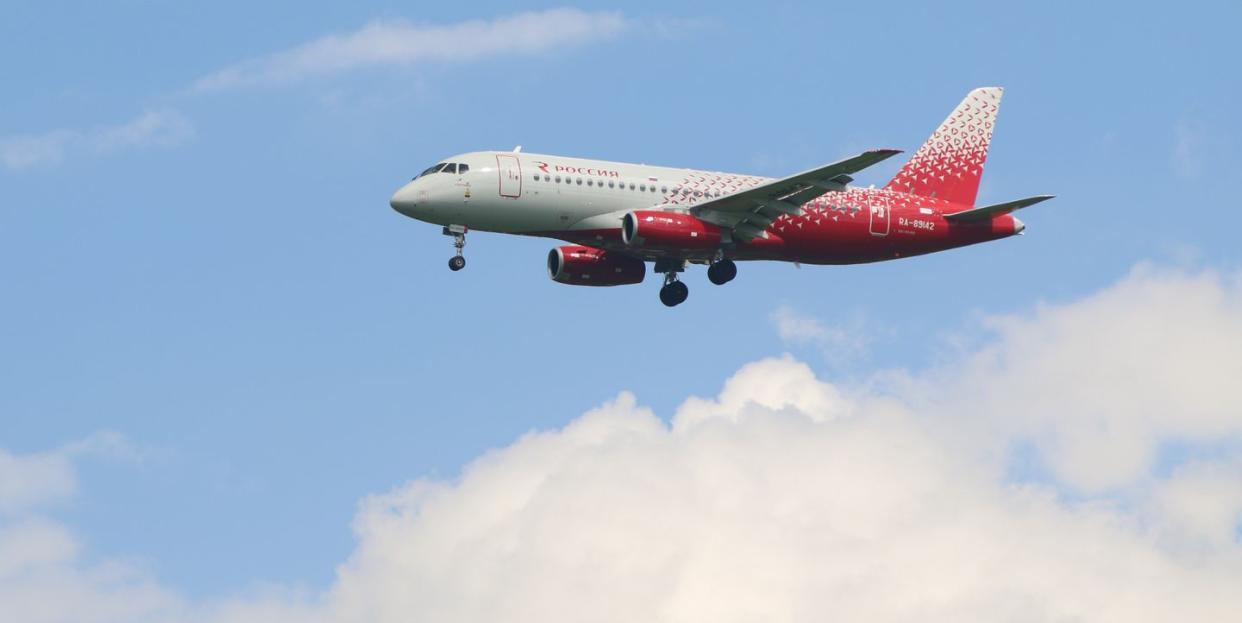Why Russia Might Have To Use Military Aircraft for Civilian Travel

Russia is starting to run out of spare parts for its commercial airliners, and must turn to its allies for help.
The longer sanctions remain in place, the more likely we are to see an increase in Russian commercial airplane groundings.
One expert believes Russian military planes could help fill the gap.
With much of the world cutting ties with Russia in the wake of its ongoing invasion of Ukraine, Moscow’s commercial airline industry is feeling the pinch. For months, Russia’s aviation sector has grappled with the repossession of aircraft leased from international companies, the halting of orders from the likes of Boeing and Airbus, and now the latest headache: the lack of spare parts available for routine maintenance.
More than 850 aircraft service Russia’s commercial jet fleet, according to data from Cirium, an aviation analytics firm. Many of these planes are Boeing or Airbus products. Due to European Union and NATO sanctions, neither company can send replacement parts to Russia; Boeing is a U.S. company, and Airbus is headquartered in the Netherlands. The companies can’t even share critical technical expertise with Russia.
✈︎ Don’t miss any of our best in class aviation and defense news. Join our squad for full access to Pop Mech Pro.
“It is a pretty dire situation for them,” Dan Bubb, an associate professor at the University of Nevada, Los Angeles’s Honors College, tells Popular Mechanics. “If they can’t get replacement parts, they will have to ground planes.”
And the longer the sanctions remain in place, the more flights Russia will need to ground.
Patrick Ky, executive director of the European Union Aviation Safety Agency, said at a recent conference that the situation has become “very unsafe” and it is only getting worse. The Federal Aviation Administration in April downgraded its air safety rating for Russia, citing noncompliance with International Civil Aviation Organization safety standards.
Bubb says Russia has three main options for keeping planes flying. He believes maintenance teams will first use up any replacement parts already in stock, and then Russia will start reaching out to its allies to see if any of those countries are willing to sell off spare parts. In fact, we’ve already seen reports of Russia attempting to get Iran to help with parts (and provide advice for dealing with sanctions). Apart from spare parts already in the country or in other friendly countries, Russian airline mechanics will need to start looking at airfields where planes are parked to pull parts off of those, Bubb explains.
✈︎ More Must-Read Aviation Stories
Still, there’s another unusual avenue that Russia could take.
“The thing they could do, which I haven’t seen done, is use the military to transport people,” he says. “They seem to have more parts for military planes, and it would be an alternate that might be plausible.”
Not every part needs replacing, of course. Some regular maintenance can happen without spare parts, and every airplane has a minimum equipment list. “Basically, what that means is as long as all the parts on that list are working, you can fly,” Bubb says. “It is easier if you have a broken seat to duct tape it or not use it, but if you have an engine part, that is more serious. You can’t take off with one engine not operating. Certain parts are more critical than others.”
The extensive use of airplanes—sometimes multiple flights in a day for one plane—can expedite the need for routine maintenance, whether new tires or updates in the engine.
Cannibalizing some planes for others starts to get tricky too. “It depends on the way the plane was designed,” Bubb says. “You would think you could replace an altimeter with another altimeter, but it depends on the way the plane was built and the way the cockpit was built. You can’t just take it off one plane. It would need to fit and be calibrated and tested to make sure it works. Some parts you can easily swap, but for the most part it is a lot harder.”
You Might Also Like


